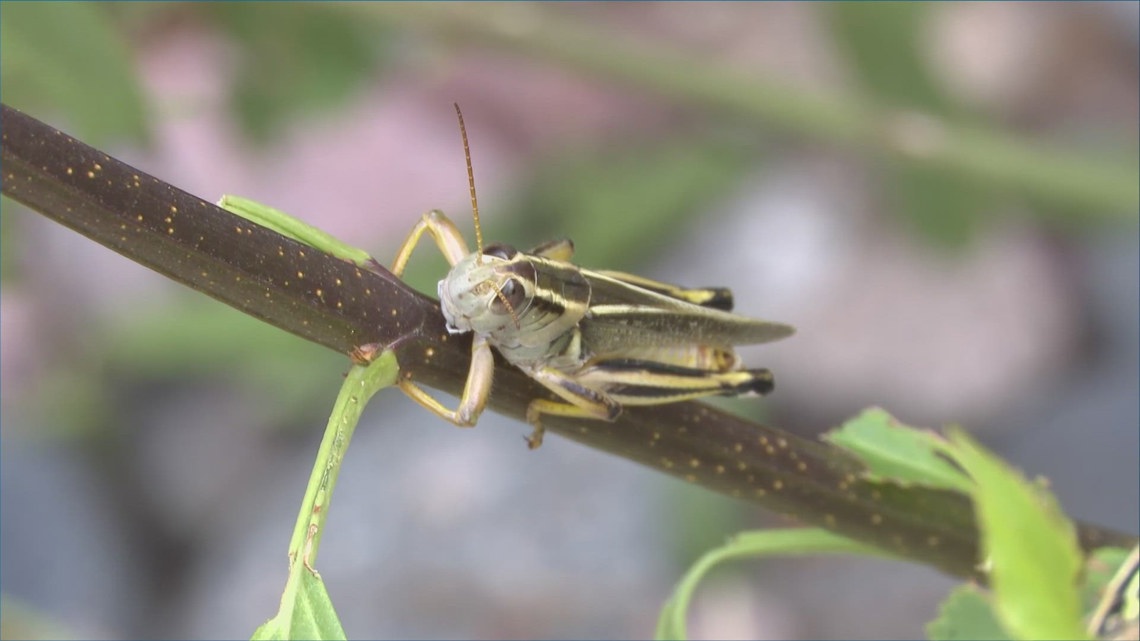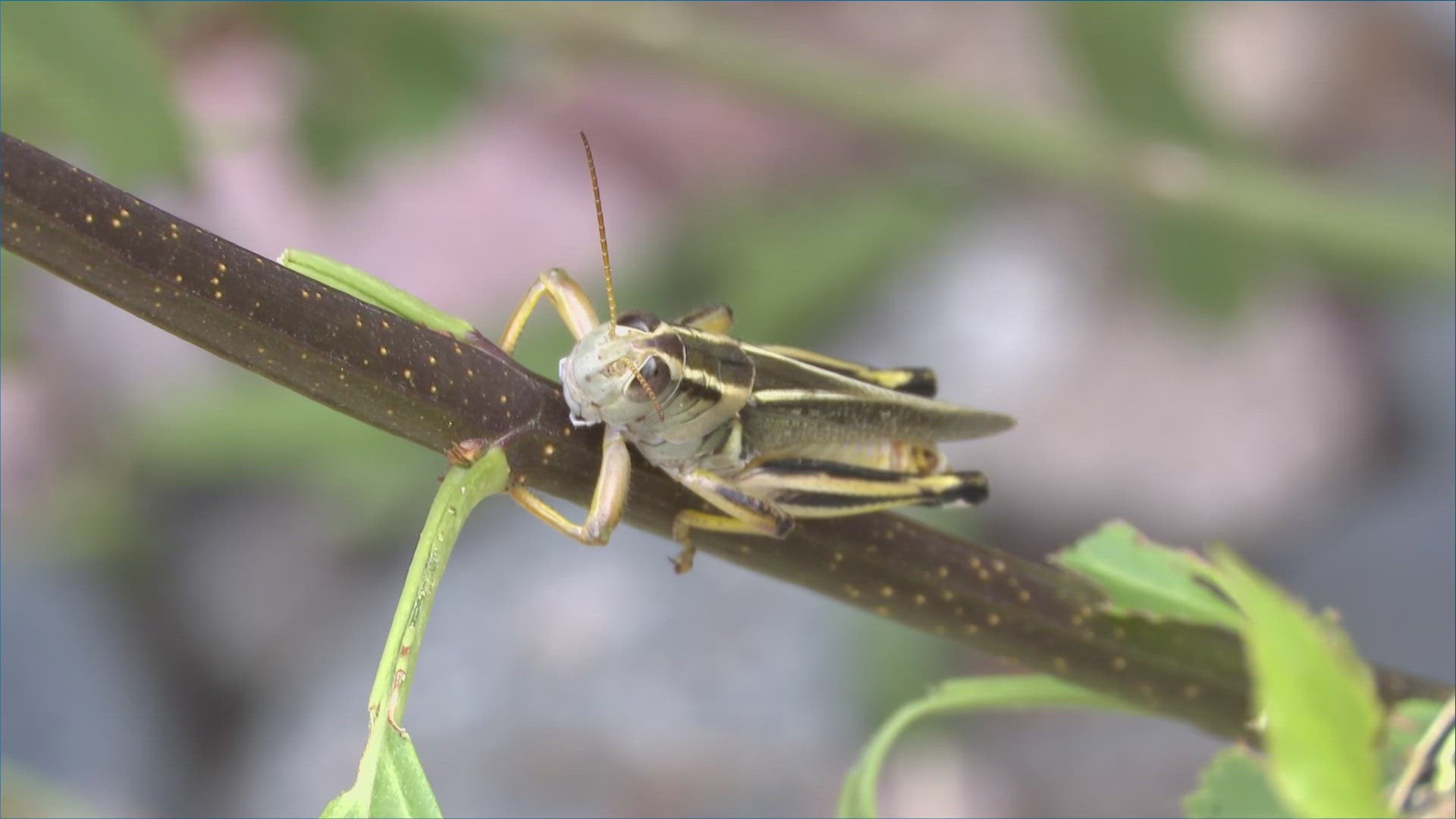DENVER, Colorado — If you've been outside for more than five minutes, you've seen grasshoppers on streets, sidewalks, lawns and gardens.
Weather patterns from 2023 and Colorado's climate are to blame for the increase of grasshoppers this summer, according to Cori Brant, an entomology manager at the Butterfly Pavilion.
"We just had perfect conditions where the temperature was exactly what they needed and we had a good amount of moisture," Brant said.
There are about 145 species of grasshoppers in Colorado, and with the number of species, people will see many stages of the grasshopper life cycle throughout the summer.
Grasshoppers lay their eggs in the ground in the late summer or early fall and die when the colder weather sets in. Their eggs will last through the winter and hatch in the spring or summer. Then, combined with a lot of vegetation as a good food source for the grasshoppers, they will thrive and continue to grow.
Another key factor of the influx is the soil. Depending on where you live and if there's agriculture, farmers will till the soil in the fall and disrupt the grasshopper eggs, which means not as many will come back the following year, Brant said.
Even with the influx of grasshoppers this year, it is expected that the population will decrease next year. Grasshoppers normally have a population boom that happens every two to four years. Diseases and predators will take out a portion of the grasshoppers, and the climate will determine the rest.
"We would need these exact same environmental conditions to continue over to see another population boom next year," Brant said.
While many people find the grasshoppers a nuisance, they are a key species in our environment. With the population boom, the insects are providing a good food source for birds, reptiles and amphibians.
Others are concerned with the environmental impact, but for long-term effects, the influx of grasshoppers isn't much of a problem.


"Really, the worst thing a grasshopper can do is eat your vegetables," Brant said.
If you're worried about the insects eating your garden, Brant said not to spray pesticides. She suggests spraying garlic on your plants, as grasshoppers hate the smell and taste of it.
"It’s a really great way to not spray or use pesticides. When you do that, you are wiping out everything else that lives in your backyard, and those are all super beneficial for your vegetables," Brant said. "You want a pollinator so you can have beautiful zucchini or any other vegetables or fruit that you might be growing."
Lisa Mason, CSU Extension entomologist and horticulture specialist, also suggested protecting the plants you don't want grasshoppers to eat.
"If homeowners are seeing extensive damage to their plants they could consider adding things like road covers or hill cloth, so the grasshoppers cannot get in to to feed on those plants," she said.
Another solution to deter them is to grow plants that naturally repel grasshoppers, such as chives, or have food that attracts the wildlife that eat grasshoppers.
"I’ve actually put out a birdfeeder to attract more birds," Brant said. "I see lots of robins down on the ground hunting for those grasshoppers, so there’s lots of ways to kind of co-live with the grasshoppers without having to spray pesticides."
If you want to be proactive about next year, tilling the soil in untouched parts of your yard will help reduce the amount of grasshopper eggs that will hatch next year if you're seeing a large amount.

